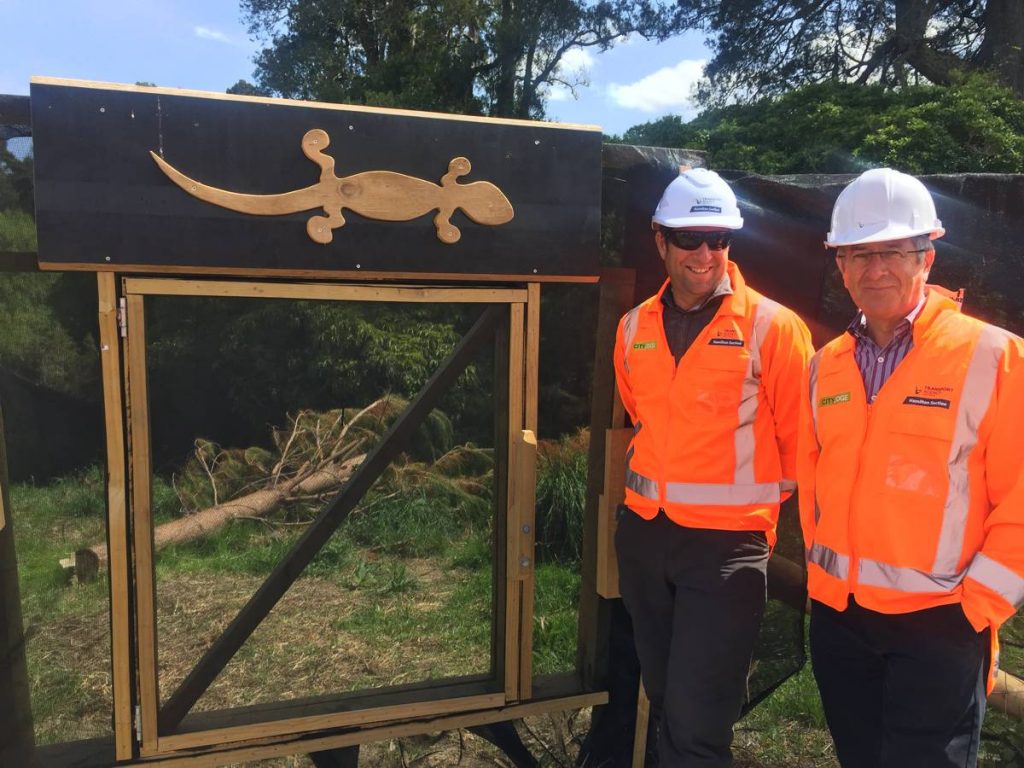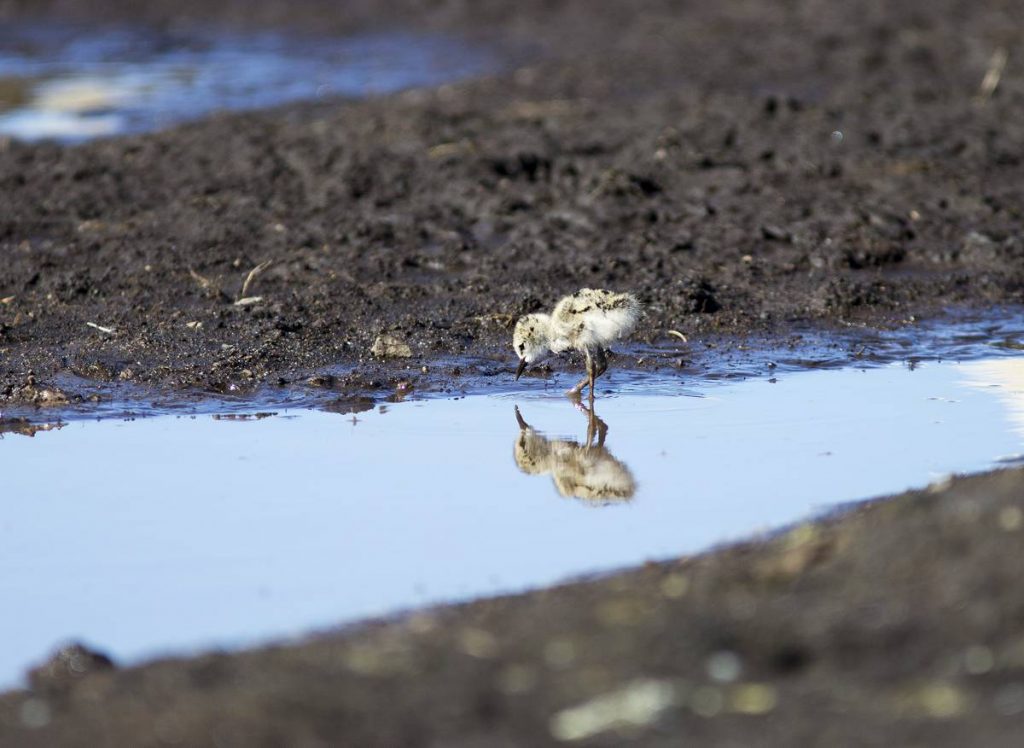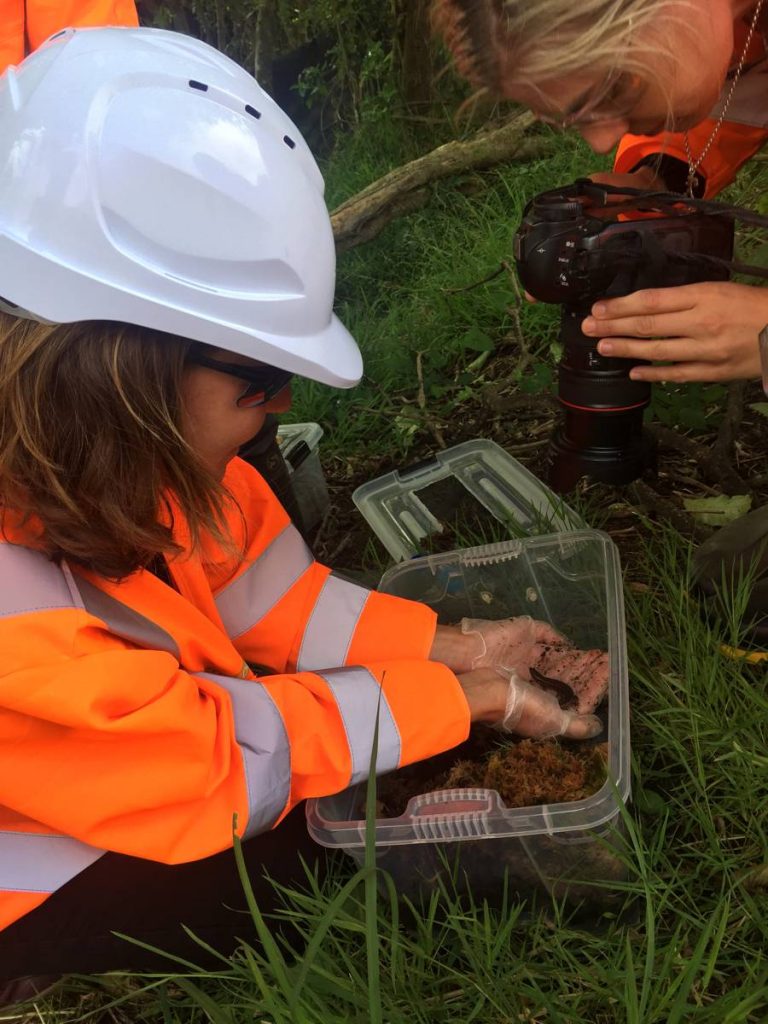Protecting native wildlife populations – and helping them thrive – is core business for the construction team building part of the new Waikato Expressway east of Hamilton.
Lizards released into protected area
This morning two more native copper skinks were released into a pest-protected home in the Mangaonua Gully east of Hamilton. A total of five have now been released in the specially designed enclosure after extensive searching and spotlighting in areas earmarked for construction.
NZ Transport Agency State Highway Manager, Niclas Johansson, said project staff had found hundreds of introduced rainbow skinks on the expressway route, but very few native skinks.

The specially designed gully enclosure they have been released in to was designed and fenced to provide an ideal home, then cleared of predators before the first two skinks were introduced late in 2016. Pest control inside and outside the enclosure continues. The protected habitat can support a population of up to 100 copper skinks. The copper skink has intense competition for habitat and food sources from the rainbow (or plague) skink which is a more prolific breeder.
Outside the enclosure, project staff will also restore large areas of native vegetation in parts of the Mangaonua Gully currently filled with scrub and weeds. Over the whole project, 10.2 hectares of gully habitat will be restored. Over the whole project, 650,000 plantings are planned – mostly native species. Pest control efforts will also be carried out throughout 20 hectares of gully habitat for 10 years after the Project has been completed.

Pied stilts raised among diggers and dump trucks
Construction teams on the same project have also been protecting a colony of pied stilts that began nesting on their construction site in November 2016.
Pied stilts (Poaka) are considered ‘at risk’ because of declining numbers and habitat. There were up to seven adults at any one time. They made two nests and laid seven eggs.
As large dump trucks and motor scrapers rumbled past on either side, the pied stilts built two nests and laid eggs in a ponded area right in the middle of what will become the Ruakura Interchange when the Hamilton Section of the Waikato Expressway opens in 2020.
Mr Johansson said the whole project team had adopted the pied stilts, and kept in touch with the chicks’ progress through regular photo and video updates.
“Everyone was surprised when the birds selected a busy construction site to nest in. While it seemed a crazy location, the construction traffic may actually have protected the birds from predators such as cats and harrier hawks.
“The project team did a great job keeping the project running while protecting the nesting site.”
Earthworks managers tweaked their construction programme to avoid the nesting site while the eggs hatched and the chicks were raised. Dump truck and motor scraper operators were briefed to avoid the nesting site and to look out for the black and white birds. Meanwhile, the project’s environmental staff monitored the nests and liaised with the Department of Conservation and the Waikato Regional Council.
The chicks hatched in December but with the onset of summer, the pond where they lived began drying up as the project prepared to shut down over Christmas-New Year.
When environmental staff checked the site in January prior to construction recommencing, the chicks and adults had moved away.

Protecting native bats and fish
The whole 22km-long project has been monitored for the presence of long tailed bats – a tiny native bat the size of a small mouse. Every potential bat roost tree is checked for bats before being felled, and artificial bat roosts have been placed in some of the gullies where they live.
Staff have also relocated native fish from areas where culverts are being installed, including the rare and endangered black mudfish, and the giant kokopu and longfin eel –species considered ‘at risk – declining’.




















